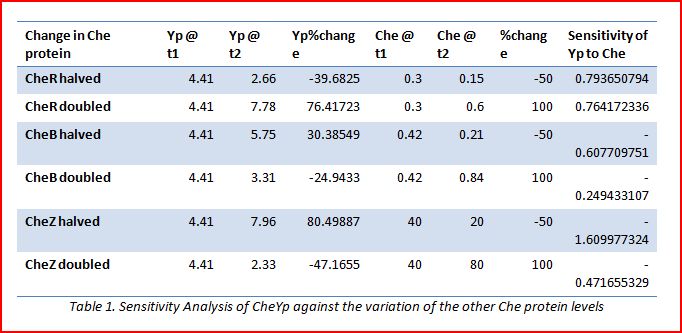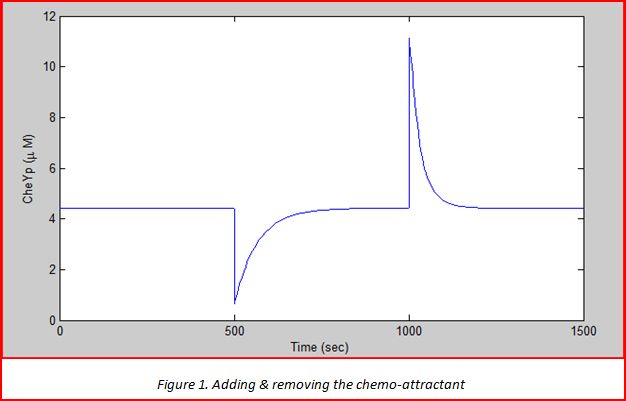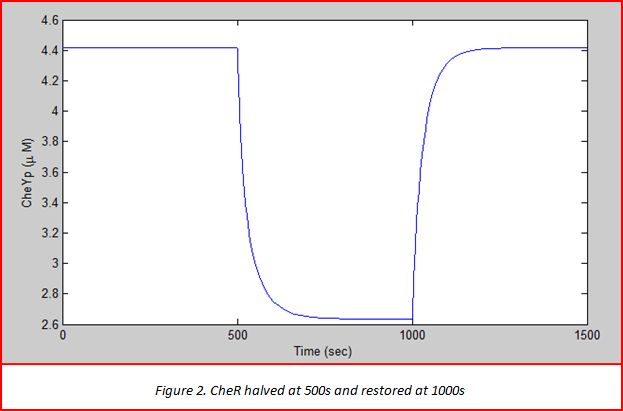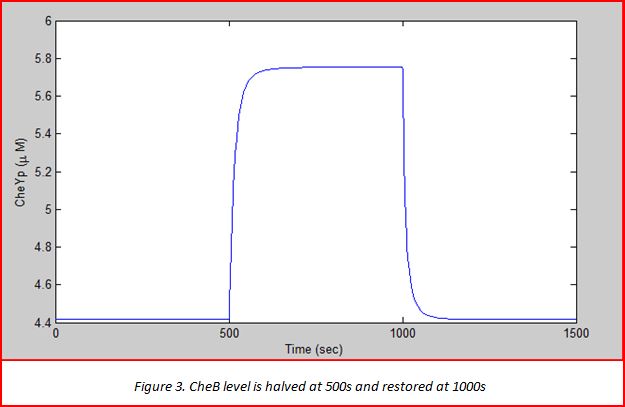Team:ETHZ Basel/Modeling/Chemotaxis/Rao2004
From 2010.igem.org
Modeling of the chemotaxis receptor pathway: Rao et al. (2004)
This model predicts quite a similar behavior of the Che proteins, as demonstrated by the previous models. A notable difference is that the response of CheYp level to the change of the level of the other Che proteins is robust to the fluctuations of the ligand (attractant) concentration. In Spiro et al. (1997), the most desirable results were obtained only for higher concentrations of the ligand.
Sensitivity Analysis
Simulations were carried out to see the sensitivity of the CheYp level, against the variations of the other Che proteins (CheR, CheB & CheZ). The results are summarized in the following table.
Simulation Results
The output plots of the individual simulations of the Che protein variations and introduction of a chemo-attractant resulting in changes in CheYp levels are discussed below.
Introducing a Chemo-attractant
A chemo-attractant is added at t=500s and it is removed at t = 1000s. The level of decrease and increase of CheYp due to the attractant is robust to different concentrations of the attractant. This is the general classical case in which the model shows perfect adaptation.
Variation of CheR
Here, CheR concentration is halved at t=500s. Then, the CheYp level drops from 4.4 uM to around 2.7 uM. Once the CheR level is restored back to the original value, CheYp level is also restored back to the initial value.
Variation of CheB
CheB halved
When the CheB concentration is halved at t=500s, CheYp level increases from 4.4 uM to 5.8 uM. When the CheB concentration is restored back to the initial value, then CheYp also comes down to the initial value.
CheB doubled
As expected, the reverse effect was observed when CheB concentration was doubled at t=500s. i.e CheYp concentration dropped from 4.4 to 3.4 uM. It came back to the original value when CheB level was restored back.
Variation of CheZ
A similar effect to CheB was observed when changing CheZ concentration. When CheZ level was halved at t=500s, CheYp level dropped from 4.4 to 2.2 uM, and went up to the initial value when CheZ level was restored.
References
[1] Rao et al: Design and Diversity in Bacterial Chemotaxis. PLoS Biol 2004;2;2;239-252.
 "
"








